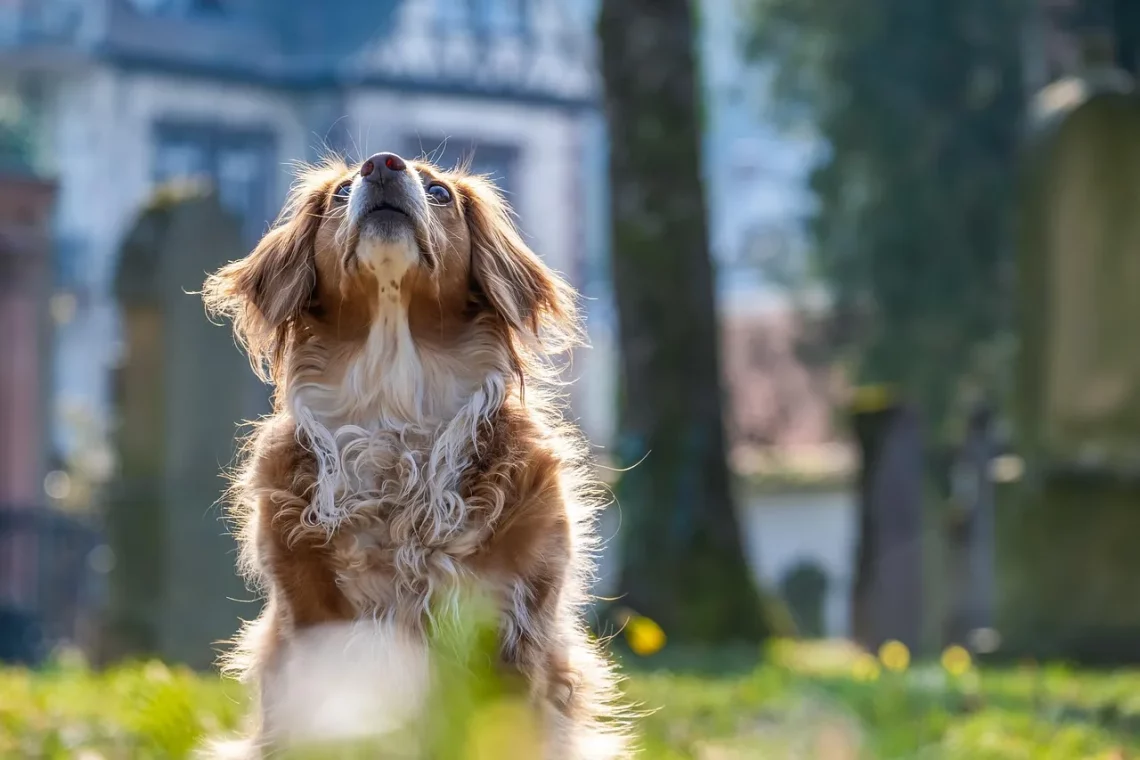
The Unbreakable Bond: Understanding G.I. Dogs in Military Service
The unique relationship between humans and dogs has been celebrated throughout history, but nowhere is this bond more profound than in military service. G.I. dogs, or military working dogs, serve alongside their human counterparts, contributing to missions that require bravery, intelligence, and loyalty. These remarkable canines are trained to perform various tasks, from detecting explosives to assisting in search-and-rescue operations. Their abilities not only enhance the effectiveness of military operations but also provide emotional support to soldiers in high-stress environments.
The training and deployment of these dogs highlight the critical role they play in military settings. Beyond their functional capabilities, G.I. dogs embody a spirit of camaraderie and resilience, often forming unbreakable bonds with their handlers. This connection is not just beneficial for operational success but also serves as a source of comfort in the face of adversity. The stories of G.I. dogs and their handlers are filled with bravery, loyalty, and sacrifice, showcasing the extraordinary capabilities of these animals. As we delve deeper into the world of military working dogs, we uncover the layers of their training, the challenges they face, and the profound impact they have on their human partners and military operations as a whole.
The Role of Military Working Dogs in Combat
Military working dogs are invaluable assets on the battlefield. Their keen sense of smell and heightened instincts allow them to detect threats that human soldiers might overlook. From sniffing out explosives to locating hidden individuals, these dogs have proven time and time again that they are essential to the safety and success of military operations.
One of the primary functions of G.I. dogs is to serve as explosive detection dogs (EDDs). These specially trained canines are adept at identifying various types of explosives, including landmines and improvised explosive devices (IEDs). Their training involves extensive exposure to different scents and situations, ensuring that they can perform under pressure. This ability not only saves lives but also helps to clear pathways for troops moving through hazardous areas.
Another critical role played by military dogs is in search and rescue operations. In the aftermath of an explosion or natural disaster, these dogs are trained to locate survivors trapped under debris. Their agility and sharp senses enable them to navigate through challenging environments, often reaching those in need faster than human search teams. The success stories of G.I. dogs rescuing injured soldiers or civilians are a testament to their courage and skill.
In addition to their combat roles, military dogs also provide companionship and emotional support to soldiers. The stresses of military life can take a toll on mental health, and the presence of a dog can offer comfort during difficult times. Many soldiers report feeling a strong bond with their canine partners, which can help alleviate feelings of anxiety and isolation.
Overall, the role of military working dogs in combat is multifaceted. They not only enhance operational capabilities but also serve as vital sources of support for the troops they accompany. The remarkable abilities of these dogs, combined with their unwavering loyalty, make them indispensable members of the military family.
Training and Selection of Military Dogs
The selection and training of military working dogs are rigorous processes designed to ensure that only the best candidates serve. Most military dogs come from specific breeds known for their intelligence, strength, and temperament. Breeds like German Shepherds, Belgian Malinois, and Labrador Retrievers are commonly chosen for their capabilities in various roles, including detection, protection, and support.
The selection process begins with evaluating a dog’s physical and mental attributes. Potential candidates are assessed for their drive, energy levels, and sociability. A strong prey drive, for instance, is essential for detection work, while a calm demeanor is necessary for roles involving interaction with soldiers and civilians. Once selected, these dogs undergo extensive training that can last several months to a year.
Training programs for military dogs are comprehensive and specialized. They include basic obedience training, socialization, and specific task training based on the dog’s future role. For example, detection dogs are trained to recognize particular scents associated with explosives or narcotics. This training often involves positive reinforcement techniques, where dogs are rewarded for successful identification, helping to build their confidence and skills.
Handlers also play a crucial role in the training process. The bond between a handler and their dog is developed through trust and cooperation. Handlers are trained to understand their dog’s behavior and signals, which is vital in high-pressure situations. This partnership ensures that both the dog and the handler can work seamlessly together, maximizing their effectiveness during operations.
The training doesn’t end once the dogs are deployed. Continuous training and evaluation are essential to maintain their skills and adapt to new challenges. This ongoing development reflects the commitment to ensuring that military working dogs remain at the top of their game, ready to serve alongside their human partners in any situation.
The Bond Between Soldiers and Their Canine Partners
The relationship between soldiers and their military dogs is often described as a deep, unbreakable bond. This connection goes beyond mere partnership; it is built on trust, loyalty, and shared experiences in high-stress environments. Many soldiers consider their dogs not just as working partners but as family members, providing emotional support and companionship during some of the most challenging times.
The bond begins to form during training, where handlers and dogs spend countless hours together. This time allows them to develop mutual understanding and respect. Handlers learn to read their dogs’ behaviors and instincts, while dogs become attuned to their handlers’ commands and emotions. This connection is vital, especially in combat situations where trust can mean the difference between life and death.
Many soldiers have shared stories of how their dogs have provided comfort during tough times, such as combat missions or the loss of fellow soldiers. The presence of a dog can offer a sense of normalcy and companionship, helping to mitigate feelings of loneliness and fear. In some cases, dogs have even been credited with saving lives by alerting their handlers to imminent danger, showcasing the depth of their instincts and training.
After deployment, the bond between soldiers and their dogs often continues. Many veterans have taken steps to adopt their canine partners upon returning home, ensuring that they can continue to provide support and companionship. This transition can be essential for both the soldier and the dog, as they adapt to life after service together.
Moreover, the experiences of military dogs and their handlers have led to increased awareness and advocacy for the mental health of veterans. Programs that promote the adoption of retired military dogs help create opportunities for healing and companionship for those who have served. The bond forged in the heat of battle often transforms into a lifelong friendship, emphasizing the profound impact that these animals have on the lives of those in military service.
In summary, the relationship between soldiers and their canine partners is a testament to the extraordinary capabilities and loyalty of military working dogs. Their presence not only enhances operational effectiveness but also provides vital emotional support, helping soldiers navigate the challenges of military life.
The Legacy of Military Working Dogs
The legacy of military working dogs is rich and multifaceted, marked by countless stories of bravery and heroism. Throughout history, these dogs have served with distinction, often becoming legends in their own right. Their contributions to military operations are recognized globally, and they continue to inspire admiration and respect.
One of the most notable aspects of the legacy of G.I. dogs is their recognition and honor through various awards and memorials. Many countries have established awards specifically for military dogs, celebrating their achievements and sacrifices. These honors serve to highlight the critical role that dogs play in military operations and the deep connections they forge with their handlers.
Additionally, the stories of heroic military dogs have been immortalized in books, films, and documentaries. These narratives not only honor the incredible feats of these animals but also raise awareness about the importance of their contributions to military service. By sharing these stories, society acknowledges the bravery of military working dogs and the sacrifices they make in service to their country.
Veterinary care and retirement programs for military dogs have also become more established, ensuring that these brave canines receive the recognition and care they deserve after their service. Many organizations focus on the rehabilitation and adoption of retired military dogs, allowing them to transition into civilian life with loving families. This commitment to their well-being is a reflection of society’s gratitude for their service.
Furthermore, the legacy of military working dogs extends beyond individual stories. It encompasses a broader understanding of the bond between humans and animals, emphasizing the mutual respect and loyalty that can exist between species. This bond serves as a reminder of the important role that animals play in our lives, particularly in the context of service and sacrifice.
In conclusion, the legacy of military working dogs is one of honor, bravery, and resilience. Their contributions to military operations and the bonds they form with their human partners leave an indelible mark on history, reminding us of the profound impact that these remarkable animals have on our lives.
In discussing these topics, please note that this article is not intended as medical advice. For any health-related issues or concerns, it is always best to consult with a qualified healthcare professional.




